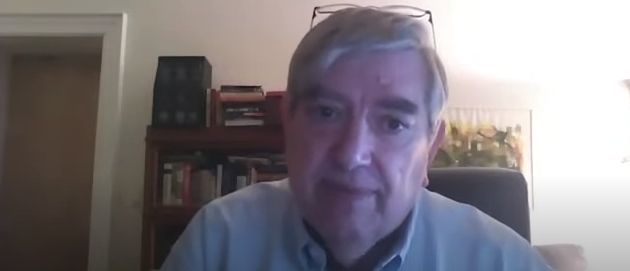In this latest interview with Tano Santos at the Heilbrunn Center, Bruce Greenwald discusses his recently released Second Edition of “Value Investing: From Graham to Buffett and Beyond.” During the interview Greenwald provides some great insights into how Warren Buffett identifies and measures the size of franchise business moat. Here’s an excerpt from the interview:
Greenwald: Okay so let me just say one thing first and absolutely true. If you are not in a franchise business, which is a business protected from competition by barriers to entry, which typically are the same thing as incumbent competitive advantages, growth has no value, because any value that’s there is going to get competed away.
So when you talk about value-oriented growth investing you are talking about a franchising business. So if as a value investor you’re going to do this in the Graham and Dodd tradition what you’ve got to first verify is that this company you’re going to buy into has a sustainable franchise, sustainable moats in Buffett’s language, sustainable barriers to entry.
It turns out that you can actually measure a moat, and I’m sure Warren Buffett always knew this but would never tell anybody about it, and it’s the key to what a franchise looks like and it’s got two elements.
So the first element is if you’ve got an entrant coming in what is the minimum viable market share that that entrant has to get to, and that’s all about economies of scale.
So it’s how big do they have to be to have sufficient scale economies to be viable. If you look at things like distributing carbonated caffeinated beverages you pretty much have to get to 25% local market share to be able to sustain the distribution infrastructure you need, the marketing infrastructure, and the local advertising infrastructure.
If you’re part of a global automobile market you can be viable at one to two percent market share and you’re not going to keep anybody out at that point. For things like cell phones you look at cell phone companies they start to be economically viable at basically 10 to 17% market share. So you start there. You’re looking for a situation where the economies of scale make it hard for somebody to enter.
The second element of this equation is how hard is it and how long does it take for an entrant or a competitor to acquire that market share, and that really is all about share stability which is driven by customer captivity and whatever proprietary technologies you can bring to the table to help keep competitors out.
And there the measure is simple. So if you look at carbonated soft drinks, caffeinated soft drinks, about one tenth to two tenths of a percent market share changes hands in any given year. If you’re going to get to 25% market share at one percent a year what you’re talking about is a 250 year moat. If you’re gonna do it at two percent a year you’re talking about 125 year moat and that’s a powerful moat.
So the two elements you’re going to look at there are the economies of scale and the proprietary technology and customer captivity that protects those economies of scale. For cell phone companies you get to 15% typically there as much as half a percent changes hands a year so you’re talking about a 30-year moat
For automobiles you gotta get to one to two percent and one percent changes hands a year so you’re talking about a one year moat, which is no moat at all.
So what you’re looking for are moats minimum required scale for entrance and the difficulty of acquiring that scale. That is economies of scale and customer captivity and proprietary technology. Ultimately of course to have the economies of scale you need you want to be the dominant competitor in your market.
So the first and simplest test here is are you the dominant performer… competitor or the dominant firm in your market? So you start there and then you look at the required economies of scale, whether they’re network effects or whether they’re simple fixed costs being spread out, and you look at the customer captivity, the customer behavior in the face of competition. Those are the elements you have to look for.
You can watch the entire interview here:
For all the latest news and podcasts, join our free newsletter here.
Don’t forget to check out our FREE Large Cap 1000 – Stock Screener, here at The Acquirer’s Multiple:




2 Comments on “Bruce Greenwald: How Buffett Measures The Size Of A Franchise Business Moat”
Great interview. Thank you.
Around minute 20, Prof. Greenwald states to calculate the Reinvestment Return, you multiple the retained earnings percentage by the value creation factor. In the case where a company has 100% retained earnings, this suggests a reinvestment return of 100% which would far exceed the capital.
This seems excessive; should earnings be multiplied by the above product and then divided by current market price to get the current reinvestment return?
Thank you.
* in the above comment, I assumed a value creation factor of 1